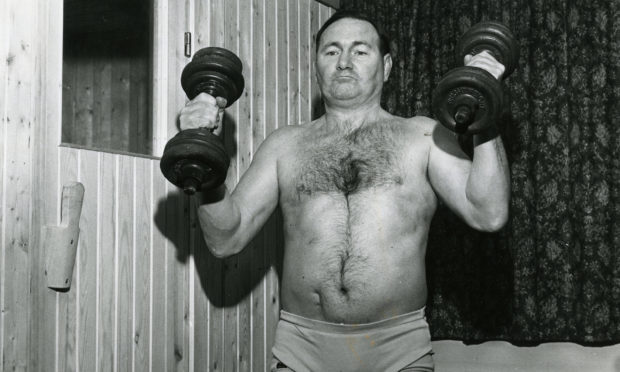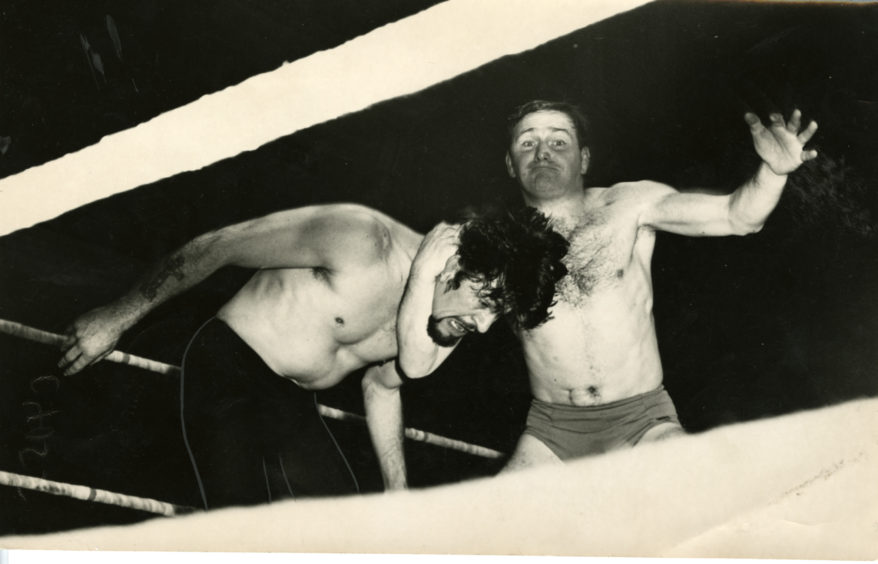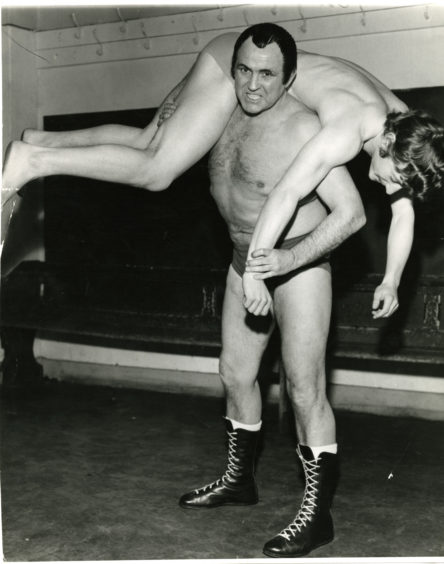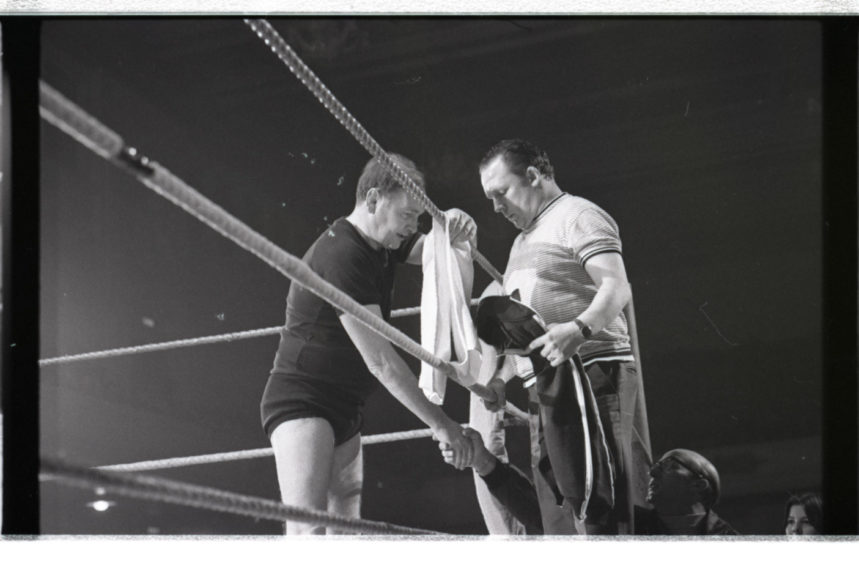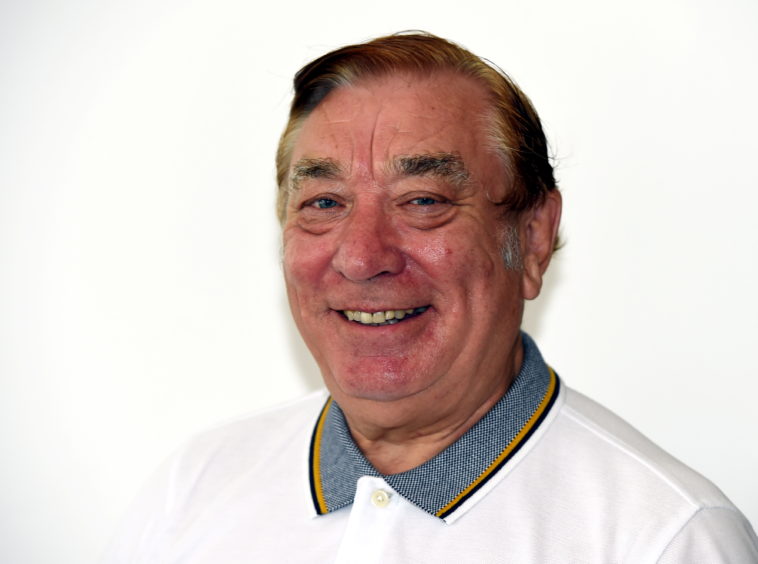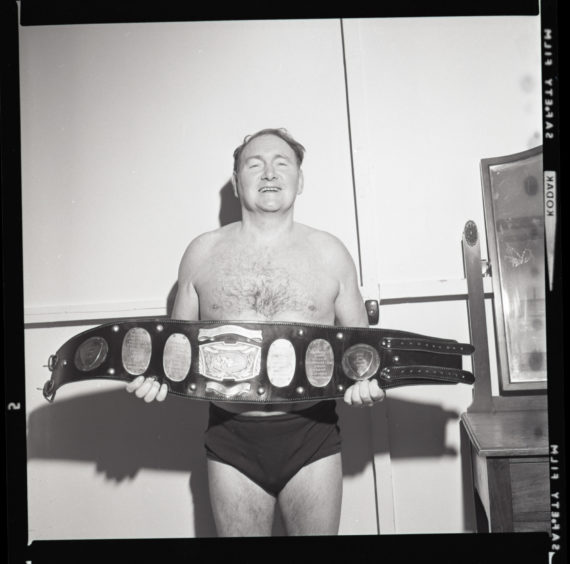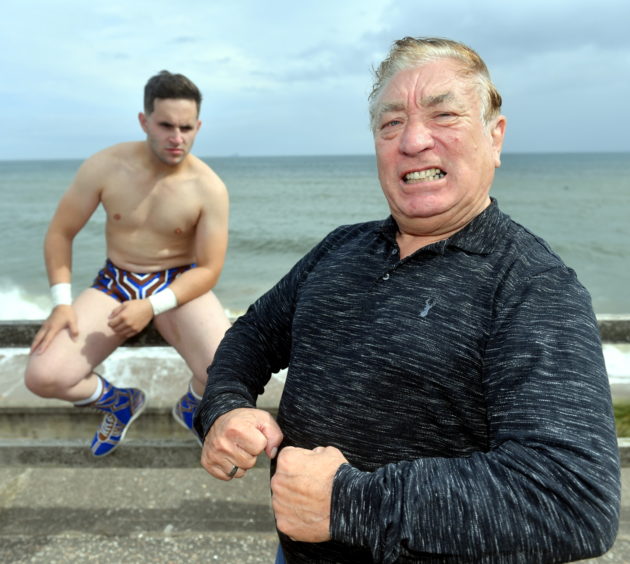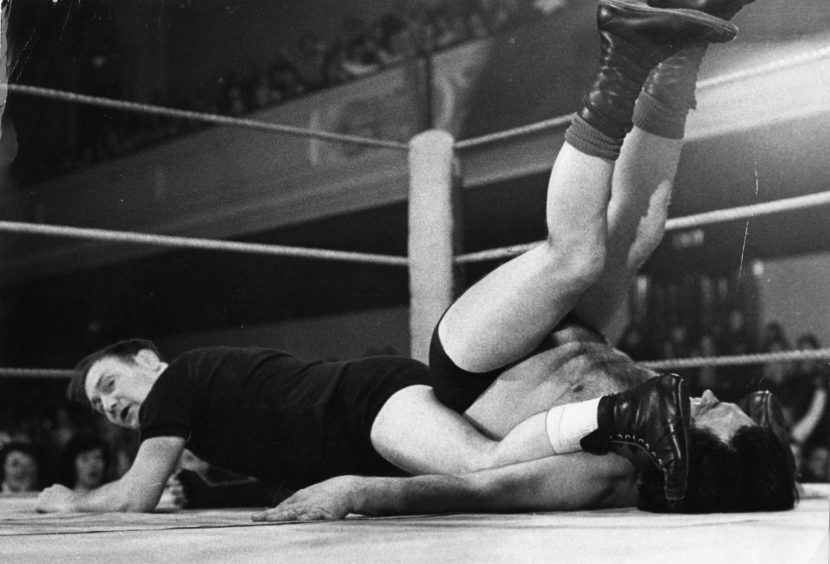It’s 55 years since legendary Dundee wrestler George Kidd was awarded the city’s “First Citizen” title. Former Aberdeen wrestler and fellow grappler Len Ironside is calling for a bronze statue to be erected as a tribute to the hero of the squared circle. Gayle Ritchie takes up the story…
Being picked on by school bullies is no fun.
But for George Kidd, one of Scotland’s greatest grapplers, it was the inspiration behind his decision to take up combat sport.
Aged seven, he wanted to be able to defend himself from kids at Dundee’s Clepington Primary School who mocked him and so he headed along to his local boxing club.
The story goes that on his first visit, George – who was born in the city’s Hill Street in 1925 – was ridiculed for his small size and severely beaten by other lads.
In one early fight, George claimed that the boy he was fighting hit him until all he could see was a “brown blur” and then landed a hard punch on his nose.
In retaliation, George dived at his tormentor’s legs and dragged him to the canvas, and by the time club officials pulled him off, the brave lad had got a little of his own back, even though he had incurred a “jeely nose”.
It seemed that George Kidd, the would-be wrestler, had arrived.
After his brief flirtation with boxing, George studied physical education, fitness, stretching and weight lifting.
He also studied Ju Jitsu, self defence and hatha yoga, which may explain some of the weird positions he put himself into while escaping from holds and bamboozling his opponents.
George’s life
George was brought up in the Hilltown area of Dundee and educated at Clepington Primary and Stobswell Secondary School.
He began wrestling when he enlisted in the Royal Navy in 1943 and after the war he went to England to pursue his passion and began a glorious career.
At 5ft 6in in his socks and weighing less than 10 stone, the odds were stacked against him and many considered him far too small to be a professional wrestler.
However, he was given his chance by promoter George de Relwsykow who booked his first paid match at the Caird Hall in 1946.
He went on to conquer numerous championship titles, making a name for himself internationally.
In 1947 George took part, and emerged victorious, in a tournament in Edinburgh for the Scottish lightweight title, defeating Tony Lawrence.
After defeating Jack Dempsey in 11 rounds for the British lightweight title in 1948, George went on to defeat all comers in the 1949 tournament in Paris to be crowned European Lightweight Champion.
He rose to become world Lightweight Wrestling Champion in 1950, a title he held for 26 years after defending it 49 times.
In 1963, the Duke of Edinburgh expressed a desire to see some wrestling in action and the first name to be considered was George Kidd. On May 22 that year, George gave a command performance for the Duke in the Royal Albert Hall.
Two years later, in 1965, George was awarded the title of Grampian TV Personality of the Year and was made Dundee’s “First Citizen” when honoured by Dundee District Council.
In his retirement he led a quiet life, living in Lawrence Street in Broughty Ferry before his death aged 72 in 1998.
He was honoured with a plaque in the Caird Hall marking his induction to the Scottish Wrestling Hall of Fame in 2015.
“He was my role model”
Former wrestling champion and Aberdeen councillor Len Ironside believes George’s life and legacy should be commemorated with a bronze statue in the centre of Dundee.
Len, who retired from the council in 2017 after 35 years and is the city’s longest-serving councillor, would also like to see an area of V&A Dundee dedicated to his friend.
“George was a friend and as a young man, my role model,” says Len.
“I’d always admired him and as a schoolboy, I followed his bouts.
“To me he was the epitome of a world champion. He carried himself well, dressed well, looked after his body and had a great sense of humour (which he was able to display on the two TV shows he had on the Grampian network).
“He treated his fans with respect, but was totally focused in the ring.
“There was nothing flashy about his ring gear, but his unique wrestling style was light years ahead of anyone else. No one has even come close.”
Len, who retired from the ring in 1994 and turned to coaching, first met George in 1971 when he was amateur wrestling in the Bells Sports Centre in Perth.
“He saw me and told me I could earn money wrestling,” Len recalls. Soon after, George got Len signed up with Max Crabtree in Joint Promotions.
Over time, the two men became mates and Len would often drive George to shows if they were appearing on the same bill.
“That was around 1973,” recalls Len. “Once there, George would spend time in the ring with me, showing me various ring tricks, before the crowds arrived. We never wrestled against each other, but he was quite unique.
“You could watch him all night and not see him perform the same move twice.
Len says that in the 1960s, nearly every lightweight champion – including Jim Breaks, Johnny Saint, and Jon Cortez – copied George or used variations of his unique moves.
“Latterly, even the heavier weight divisions tried to copy him. It was the best form of flattery.
“Frequently George would invite people to put him in a hold so he could dazzle them by escaping.
“He created many of his own holds and throws and there wasn’t a move he couldn’t escape from, earning him the title of the ‘Houdini of the Ring’.”
Len believes that George, who raised vast sums of money for charity, should have been knighted, given his achievements.
“He was a World Champion for 27 years, something unequalled in any sport,” he reflects.
“He unified the Lightweight championships round the world, when wrestling was treated more seriously.
“And another of his admirable and little known characteristics was that he raised hundreds of thousands of pounds for charitable causes. But he never boasted or even talked about the help he gave others.
“He put Scotland, and in particular Dundee, on the map.
“Given all this, he should have been knighted. Footballers, runners and tennis players today have been honoured for less.”
He created many of his own holds and throws and there wasn’t a move he couldn’t escape from, earning him the title of the ‘Houdini of the Ring’.”
Back in 2015, George became the first entrant into the Scottish Wrestling Hall of Fame created by wrestling historian Bradley Craig.
He was inducted by Len during a Scottish Wrestling Entertainment event in the Caird Hall.
A memorial plaque honouring George was also hung in the venue, and Len and Bradley presented it to Lord Provost Bob Duncan.
“That’s fantastic, but I would love to see a bronze statue of George in the centre of Dundee,” says Len.
“There should also be an area dedicated to him in the V&A Dundee museum.
“He was a credit to wrestling and opened the door to the lighter weights like myself.
“He did his country proud and was a fantastic ambassador for Dundee. George was revered throughout Europe.”
Greatest grappler
Aberdeen-based WrestleZone Scotland hosts family-friendly wrestling events across the north-east with thousands of fans attending annually.
Spokesman Martyn Clunes says the organisation fully supports the initiative to honour George via a more permanent tribute.
“Wrestling in Scotland is known throughout the world and it all started with George Kidd in Dundee. He is one of Scotland’s greatest grapplers,” says Martyn.
“Len Ironside speaks very highly of the training he received and has passed on many of his hints and tips to the grapplers at WrestleZone in Aberdeen.
“George’s legacy in wrestling continues to shine and his discipline in training forms a core part of today’s version of the sport, which mixes George’s technical wizardry with the top-class showmanship expected by grappling fans.”
Martyn says he thinks a “lasting tribute” to George such as a bronze statue would be a great way to recognise his contributions to Scottish wrestling as a whole, “providing a lasting landmark in the city he represented with great pride”.
